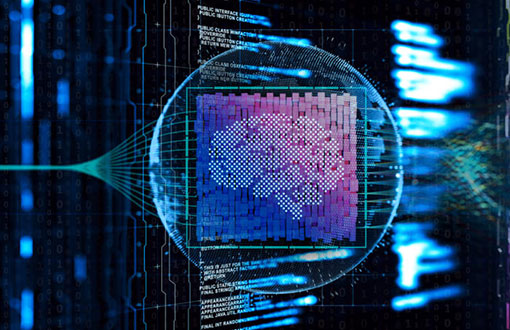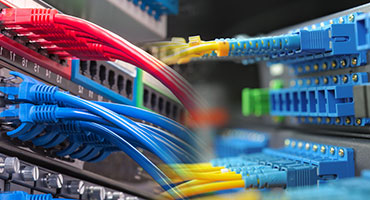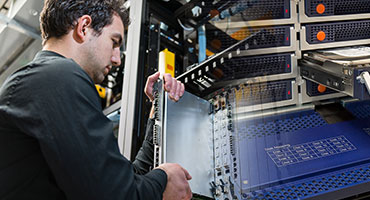Why Wi-Fi needs artificial intelligence

Business Wi-Fi has grown in importance, and an AI-based operational model is needed to keep up with increasing demands.
This week Juniper Networks plunked down $405 million to acquire Wi-Fi vendor Mist Systems. As always, Network World's Michael Cooney did a fine job covering the news, so I won’t rehash that. What I want to look at is something specific that Cooney wrote — that “Mist touts itself as having developed an artificial-intelligence-based wireless platform.” Why does Wi-Fi need artificial intelligence (AI)?
A decade ago, Wi-Fi was considered a network of convenience, but not the primary network. Devices that were important and needed reliable connectivity depended on a wired connection. The Wi-Fi network was used for random, convenient connectivity, such as when a worker was in a conference room. Over the past 10 years, more and more devices have shifted to being Wi-Fi only. Tablets and mobile phones are obvious, but there’s a wide range of IoT devices that are Wi-Fi only. And with Wi-Fi 6 right around the corner, many experts, myself included, expect to see an explosion of Wi-Fi-connected IoT endpoints over the next several years.
Wi-Fi is now mission-criticalToday, the Wi-Fi network is mission-critical, and it needs to be reliable, resilient, and always available. I’ve talked with several companies that have had digital initiatives fail because of poor Wi-Fi. For example, a high-end retailer deployed tablets for in-store personnel to show more merchandise to its customers to increase impulse purchases. However, the Wi-Fi network was poorly designed and the performance of the mobile application was so bad that it drove customers out of the store.
Flaky is the norm for wireless LAN
The biggest challenge in relying so heavily on Wi-Fi is that it is notoriously problematic. That is because Wi-Fi issues can be difficult to troubleshoot. Issues can be related to density, the client, software on the device, DNS issues, a wired network, a DCHP problem, a configuration error, or a wide range of other issues. The following data points from a recent Wi-Fi troubleshooting survey conducted by ZK Research highlight how acute the problem is (note: I am an employee of ZK Research):
- Wi-Fi problems account for 64 percent of all network problems.
- A staggering 60 percent of networking professionals spend the equivalent of one day a week doing nothing but Wi-Fi troubleshooting. Even more shocking is that 15 percent of engineers spend over half their time troubleshooting Wi-Fi issues.
- In 52 percent of cases, the process of just isolating the problem takes over an hour.
- In 47 percent of companies, at least 10 percent of workers have weekly Wi-Fi problems.
Those numbers should scare the pants off even the most seasoned engineer, as the upcoming wave of new Wi-Fi connected devices is going to make things much worse if organizations don't change how they manage wireless networks. The big problem is that people can’t connect the dots fast enough to make sense of all the data coming from all the disparate sources. This is where AI shines.
Enter artificial intelligence (AI) for Wi-Fi
AI can provide the analytics to make IT smarter, solve network issues faster, and make engineers more efficient. AI is particularly helpful with event correlation, which enables IT to not just fix a problem, but also quickly laser-in on the source of the problem so it doesn’t keep happening. Once a baseline is established, AI can use anomaly detection and other features to avoid many common problems, such as DHCP, RADIUS, and security problems.
AI will lead to autonomous operations, but not right now
Over time, I expect AI to lead to fully autonomous networks where the AI runs the wired and wireless network. However, I don’t expect businesses to embrace the concept of a “self-driving network” immediately. Instead, the initial wave of AI as a network management tool will be to assist the engineer by providing recommendations coupled with automated basic tasks, including troubleshooting and a problem avoidance.
Engineers shouldn’t fear AI or worry about the technology replacing them. Instead, they should look at it as their best friend because it will free up huge amounts of time, as much of the heavy lifting will be done by machines.
The access edge, particularly the wireless network, is growing in importance. But at the same time, it is being pushed to do more because more devices are connecting to it, resulting in orders of magnitude more data traversing the network. Manual operational methods have never worked and certainly will not work in a hyper-connected world. AI-based systems are becoming mandatory to keep the performance of Wi-Fi high and to shed the reputation that flaky Wi-Fi is the norm.




